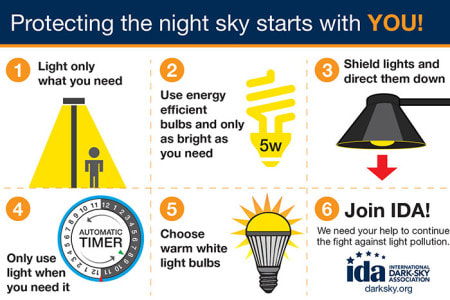Forty one years ago, Earth Day 1977, Appalachia- Science in the Public Interest filed Articles of Incorporation. Building on the growing awareness of anthropogenic impact on the environment, the organization was the first of its kind in Appalachia: using science and technology to affect change.
When the modern environmental movement was at its genesis in the 1970’s, pollution was in plain sight. White birds turned black from soot. Smog was thick. Recycling was nascent. Rachel Carson's book Silent Spring published in 1962. It brought to light the dangerous use of a pesticide called DDT that was polluting rivers and destroying the eggs of birds of prey like bald eagles.
Then, in 1969, a large oil spill struck the coast of Santa Barbara, California. It moved then-Senator Gaylord Nelson from Wisconsin to put Earth Day on the national stage. More than 20 million people turned out.
It spurred a movement that pushed then-President Nixon to create the Environmental Protection Agency. In the 48 years since the first Earth Day, there have been more than 48 major environmental wins. Protections have been put in place on everything from clean water to endangered species. A federal agency was created to protect the environment; The EPA also works to protect human health. For example, lead and asbestos, once common in homes and offices, have been largely phased out of many common products.
So it seems that we’re on a pretty good track looking back over the past 41 years. A lot of our cumulative actions have had a real impact. However, as I am writing this, I am struck by my renewed sense of urgency in advocating for taking action; the current administration is rapidly dismantling policies and social norms established to protect the environment.
It’s personally terrifying to watch as decades of outreach and raising awareness that created localized change and led to changing policies can be unraveled in such a short time. I would be remiss to not mention the “Mission Accomplished” sentiment that has prevailed with Earth Day in the new millennium. This administration has proved that nothing is sacred, and crises like Flint, Houston and Puerto Rico prove that we still need to advocate for change and stand up for the earth and all it’s citizens. But that means we must still diligently work to protect the earth.
So for Earth Day 2018, reflect on what has been done in the past 40 years (!!) and grow hope that we can still affect change.
We breathe cleaner air. Los Angeles, for example, was infamous for its smog back then. Air pollution there, as measured by ground-level ozone, has dropped from 0.58 parts per million to 0.151 p.p.m. Yet this happened while car-loving California drove twice as much over that period.
. . . partly because gasoline-powered cars are more fuel-efficient. In 1970, the average for cars was 13.5 miles per gallon; now it’s 22.6 m.p.g. Light trucks: 10 m.p.g. vs. 18.1 m.p.g. But the overall fuel efficiency has improved less — 13 m.p.g. vs. 20.7 m.p.g.— because a higher proportion of S.U.V.'s and pickups are on today’s highways.
The per capita use of fossil fuels has decreased. America consumed 14.7 million barrels of oil per day in 1970. It consumed 18.9 million barrels last year, a 29 percent increase. But the United States now has 54 percent more people and the economy is 15 times larger. U.S. coal consumption of 731.1 MMst in 2016 was 8.4% lower than the 2015 level. Consumption peaked in 2015, after rising from 680 MMst to 1,125 MMst since 1977. The electric power sector accounted for about 92.8% of the total U.S. coal consumption in 2016.
We recycle more. In 1970, an average American produced 3.3 pounds of trash a day; almost all of it ended up in landfills or incinerators. By 2012, that American produced 4.4 pounds each day and sent 54 percent of it to landfills or incinerators. The rest was recycled, composted or burned for energy, options that barely existed in 1970. Plastics represented only 2.6 percent of the nation’s trash in 1970 but now account for 17.6 percent, posing a particular challenge since many types of plastics neither decompose in landfills nor recycle easily.
Rivers don’t burn. The Cuyahoga River in Cleveland caught fire in 1969 because it was so polluted. A survey at the time found that not a single species of fish existed in the lower part of the river, which empties into Lake Erie. Biologists recently counted 32. Average dissolved oxygen levels went from 2 milligrams per liter to above 6. Kayakers and canoers now jostle for room on the river along with ships.
The bald eagle is back. Spotting the national bird in 1970 was a rare treat. There were fewer than 800 breeding pairs in the lower 48 states in 1970. While they still can’t be taken for granted, the eagles are common along America’s waterways. The National Audubon Society, using its Christmas Bird Count, estimates there may now be more than five times as many, while federal government data suggests the population has grown more than 10 times.
But the atmosphere is still full of CFCs. At the time of the first Earth Day, chemicals known as chlorofluorocarbons or CFCs (among them the well-known brand Freon) were in worldwide use as refrigerants and propellants in aerosols. It wasn’t until later in the 1970s that scientists discovered their destructive effects on the ozone layer.
The National Oceanic and Atmospheric Administration began tracking atmospheric concentrations of CFC-11, one of the most significant types, in 1977, measuring it at about 140 parts per trillion. That number nearly doubled, to 270 parts per trillion, in 1994 before beginning a slow decline as production was phased out and existing CFCs were replaced by other chemicals. In January 2016, the concentration measured 232 parts per trillion.
And the earth is warming. Since that first Earth Day, the world has been warming at an accelerated pace compared with prior decades, and scientists believe rising emissions of greenhouse gases are the main cause. They calculate that the world has warmed by about 1.5 degrees Fahrenheit since the 19th century, with about 1 degree of that occurring just since 1970. The warming has been sharply higher over land and in some polar regions. As a result of melting glaciers and the expansion of warmer ocean water, the sea level is rising ever faster. It rose at an average rate of 2 millimeters a year between 1971 and 2010, and even faster in the past decade, after rising at an average rate of 1.7 millimeters per year in the last century.
What to do today:
The theme of 2018's Earth Day celebration is plastics—specifically how to decrease their unwanted impacts on our environment. What was perhaps set in place in the mid-20th century when plastic was manufactured on a large scale has come back to haunt us.
Plastic refuse is everywhere. It's bigger than Texas in the Pacific garbage patch, and it's as small as the micro plastics getting eaten by fish and churned out on our dinner plates.
Some environmental groups are leading grassroots movements to cut back on the use of common plastics like straws; the U.K. even recently proposed passing a law to ban them. Its one incremental way to cut back on the whopping 91 percent of plastic that isn't recycled.


 RSS Feed
RSS Feed